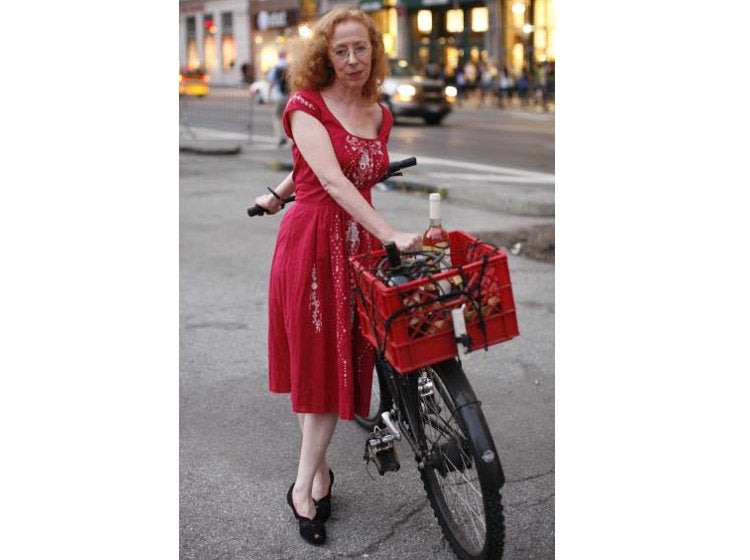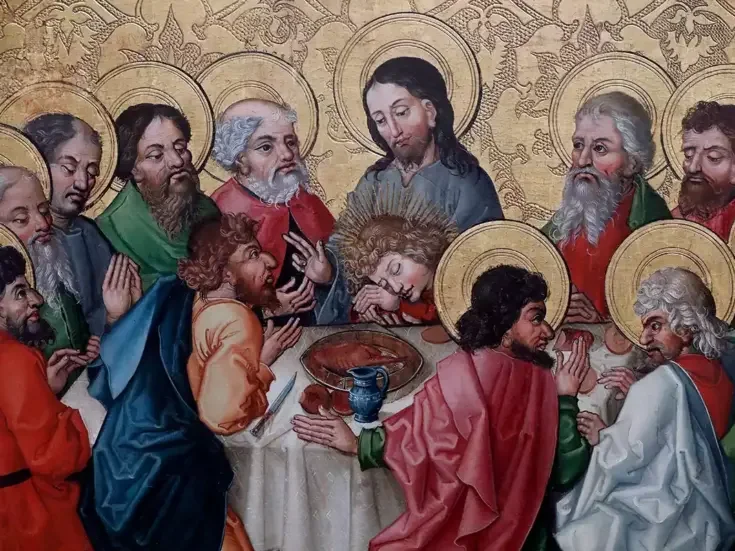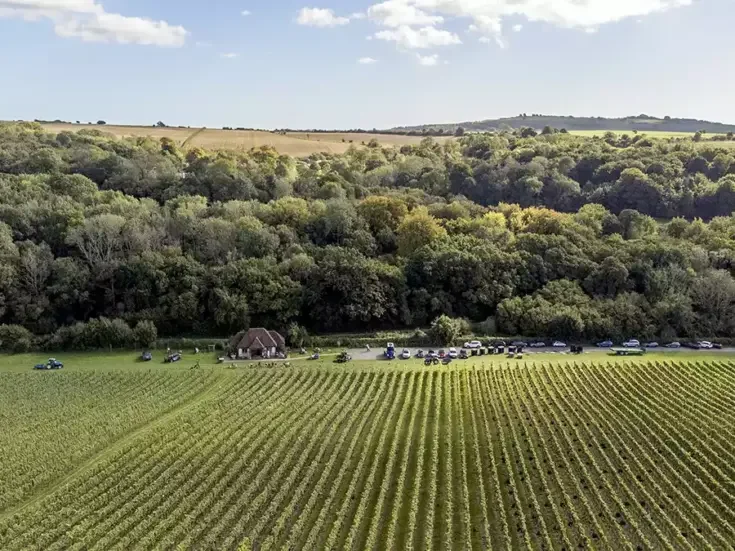
Jamie Goode and Sam Harrop MW
Authentic Wine: Toward Natural and Sustainable Winemaking
University of California Press, $29.95 / £20.95
Alice Feiring
Naked Wine: Letting Grapes Do What Comes Naturally
Da Capo Press, $24 / £15.99
reviewed by Peter Richards MW
First, a caveat: Natural wine has a knack of generating heated discourse wherever it rears its protean head. The mere mention of this topical and contentious term has people-be they commentators, producers, salespeople, or even wine drinkers-closing ranks with a narrowing of the eyes and a steeling of the jaw. Caution, then, that the judgments of this piece-unashamedly personal and inevitably imperfect as they are-concern solely the books inspired by natural wine and not natural wine itself. It is beyond the remit of this piece to explore the mist-ridden intricacies of what natural wine is or isn’t, or what it should or shouldn’t be. Those thirsty for manifestos should look elsewhere; those keen to know more about two authoritative and articulate books on the matter should read on.
It’s likely that Alice Feiring, Dr Jamie Goode, and Sam Harrop MW are familiar names to regular readers of these pages. New York City-based Feiring is known as a thoughtful and occasionally outspoken commentator.
Her breakthrough solo book was The Battle for Wine and Love: or How I Saved the World from Parkerization (Mariner Books, 2008); her latest release is Naked Wine. Goode, a respected writer, blogger, and former scientific editor, has teamed up with winemaking consultant and Master of Wine Harrop to pen Authentic Wine: Toward Natural and Sustainable Winemaking. This follows on from Goode’s award-winning debut release, Wine Science (Mitchell Beazley, 2005), since rereleased by UC Press as The Science of Wine.
As the dates suggest, these books are hot off the press, presumably in response to the surge of interest in natural wine that has occurred in the past few years. (Just how widespread this interest actually is beyond the wine trade and connoisseurs may be a moot point- something I’ll return to in due course.)
It’s worth noting from the outset, however, that while both books incorporate the word “natural” in their subtitles, neither uses the phrase “natural wine” in its title. This pointed avoidance is intriguing. It reveals just how controversial this issue has become and how keen the authors are to set their own seal-or definition-on the debate. Were a wry Tony Blair reviewing these books, he might have felt tempted to comment that the authors were feeling the hand of history on their shoulders.
Though they deal with common subjects, both books are remarkably different in their style and format. It seems appropriate, then, to consider each book in its own right before pulling together general conclusions. Comparisons may be invidious, but they can also be instructive in this context.
Authentic Wine is a worthy and welcome attempt, in the authors’ words, “to make the wine industry pause to reflect on its current trajectory.” The gentle exhortation is to “shift in the direction of naturalness.” It covers a range of subjects-from terroir, to marketing, via grafting, biodynamics, sustainable wine growing, winemaking interventions, natural wine, yeasts, alcohol, faults, and the carbon footprint of wine. Goode brings his customary scientific rigor and refreshing prose to the table, while Harrop’s presence is most keenly felt in certain sections-for example, in the wonderfully eyeopening chapter on winemaking tricks of the trade or in discourses on yeast, faults, Brettanomyces and the role of sulfides in the perception of minerality.
There is much to learn and admire in these pages. The technique of countercurrent extraction, introduced in Australia in 2004 and used to extract wine from marc (improving the yield of wine by a scary 100 liters per ton), was new to me, as was the role and provenance of the antioxidant glutathione, a product of the lees but that can also be boosted by the addition of inactivated yeast. The fact that at least 400 of wine’s 800 potential volatile flavor compounds are reportedly generated by yeasts vindicates the authors’ contention that wine lovers and winemakers alike would do well to give more attention to these microscopic fungi. And the informed estimate that 45 percent of premium California wines are alcoholadjusted makes for depressing but not unexpected reading.
Goode (and I assume it was Goode who wielded the pen) has a delightful turn of phrase. Provenance is “the power of wine to tell the story of its origin.” Terroir “speaks with a quiet voice.” In more mordant fashion, sustainability is “a word in search of a meaning.” He can also be engagingly honest, for example, where there is a lack of scientific clarity on certain issues. How wines with no added sulfur work is “hard to explain” scientifically, while he concludes his case study on the lack of clarity on the processes that occur when wine ages by saying, “In some ways, it’s nice that wine isn’t all about science, and that there’s still a lot of room left for art.”
The book also features some fine quotes from various wine trade luminaries , such as Ted Lemon holding forth on natural wine, and a memorable discourse by Justin Knock MW on pumps. To cite a few, Nigel Greening describes biodynamics as “Harry Potter grows grapes”; New World biodynamic producers are frequently “like fairies in the vineyard but orcs in the cellar” (Jason Lett); Eric Texier quips that “natural wines are full of good intentions. They are full of fossil fuel, too.” Mac Forbes memorably says, “Anyone who thinks they know all the answers is a long way from making interesting wine.”
Rooting around in murky waters
Moving from the micro to the macro, it is hard to disagree with Goode and Harrop’s basic contention that the wine trade needs to “put its house in order.” This applies on many levels-from environmental impact, to social responsibility, even basics such as wine quality and marketing. The book is at its best when getting its hands dirty rooting around in the murky waters of issues like winemaking interventions, sustainability, and biodynamics-subjects the authors clearly feel comfortable around-and fishing out deliciously awkward questions, like why ingredient listing isn’t more common; what the future might be for GM yeasts if they are proven to reduce alcohol levels; why the eminently PR-able natural wine found a voice in hitherto unfashionable regions like Beaujolais and the Loire; why white Burgundy is susceptible to premature oxidation; to what extent sulfur and Bordeaux mixture can be considered “natural”; how wine faults may be responsible for the character of terroir in certain wines; why many socalled natural winemakers don’t want to talk about carbon footprint.
Where the book has a tendency to disappoint is when it comes to providing answers to these provocative questions. To my mind, some key issues are either left hanging (grafting, GM yeast, Bordeaux mixture, VA , minerality as reduction) or the book’s learned, objectivized tone means they are resolved in shades of unsatisfying gray (acidification, amphorae, ingredient listing, enzymes, carbon offsetting). Are such fudges a function of the dual authorship? Perhaps. They may also, it must be conceded, be the result of a nuanced and sensitive reading of what are complex matters, the ramifications of which are still playing out around the wine world. (And yet to this you could uncharitably ask, Why not wait to write the book, then?) The book’s ultimate conclusion for the trade to adopt a more sustainable outlook is sensible but hardly revolutionary, and it lapses into an odd, hectoring tone, touting hackneyed phrases such as, “There is a need for less politics and more action.”
In those instances where the authors do stick their necks out-for example, eloquently advocating cultured yeasts for natural wines-the book takes on a new lease of life. But the authors’ natural tendency toward the pragmatic often ends up stifling such clarion calls, as it does in this case. Goode and Harrop argue quite rationally that blind, “dogmatic” adherence to indigenous yeasts can lead to spoilage both in primary and malolactic ferments, thus detracting from a wine’s quality and by extension its expression of terroir. But naturalness to most natural wine producers is not about reliable fermentations or predictable outcomes; its core values lie in the very abnegation of zealous control and manipulation. The authors’ call for a “broader view of natural wine” to allow the use of cultured yeasts “selected from nature” ends up sounding like exactly what many natural producers fear most: a watering down of what is by its very nature an extreme form of winemaking. One feels Goode and Harrop would be better placed pushing conventional winemakers into sustainable production rather than trying to convince natural winemakers of the virtues of cultured yeasts. Either way, for all their “slightly heretical” notions, the authors seem to empathize on some level with wild yeast adherents. They also applaud winemakers “who are able to achieve excellent results without any inoculation.”
Within all this, their message is robbed of its clarity and urgency. Furthermore, questions have been raised about potential conflicts of interest in the book and on this topic in particular. Both Harrop and Goode have reportedly had dealings with yeast-and-bacteriamaker Lallemand, the true extent and nature of which I am entirely ignorant. Knowing both men, if this is true then I am confident neither would allow such involvement to cloud their independent judgment (and their argument patently holds water in any case). However, the fact that there is no obvious disclosure about this in the book has the potential to leave a bitter taste. Perhaps an oversight to remedy in future editions?
Further recommendations for cosmetic improvement include higher production values. (Goode’s photos are sadly flat in monochrome gray, which leeches any sense of life and depth from them, especially the landscape shots.) Americanisms such as “gotten,” “headed,” “whole heap,” and “math” may satisfy an important market but jar in the mouths of Goode and Harrop. Having written extensively on Chilean wine, I would contend that the assertion that “Chile has so far struggled to make world-class wines” betrays a limited experience of that country’s increasingly fine wines.
The book’s case studies can interrupt an easy reading flow and are sometimes superfluous, albeit in an innocuously informative way. Finally, it would have been fascinating to read a section on wine health, which Goode dealt with in Wine Science but, somewhat inexplicably, not here, when it is an issue of such importance to so many wine drinkers.
Such criticisms aside, this is an immensely valuable and instructive book on what is a fascinating topic. As with all good work of artistic merit, it invites you to question your own position on many key issues, stimulating welcome debate along the way. Its advocacy of sustainable wine growing is rational and timely. It is a highly recommended read for all lovers of wine-authentic or not.
From a different angle
Naked Wine comes at its subject from a very different angle. Feiring’s latest book is a variation on the format of her earlier Battle for Wine and Love- part travelogue, part defiant credo, part engaging confessional. The overarching narrative is the challenge to make Feiring’s own natural wine in California-a state whose wine she has fiercely criticized in the past-while drawing in tales from her travels in France, Spain, California, and beyond, taking in key figures in the naturalwine scene such as Marcel Lapierre and Jacques Néauport. At the end are illuminating lists including USA – approved additives and processes for wine and a compilation of natural winemakers she recommends.
This is a refreshingly frank and witty book, unashamedly emotive and outspoken-an almost seamless blend of the personal and professional recounted with great charm, candor, and skill. It’s a compelling read that at once informs, entertains, and challenges its reader-no mean feat for a wine book. It helps to consider Naked Wine in the context of Battle for Wine and Love. This is partly because the latter provides an insight of startling clarity into Feiring the person and the writer, and this information is essential background in what are both very personal narratives.
In Wine and Love, Feiring announces herself with characteristic wit-tinged honesty as a flame-haired, straighttalking lapsed orthodox Jew of Russian extraction with considerable expertise in dance therapy. An occasionally acerbic vegetarian with a penchant for witty candor and a tendency for the dramatic, she has an elegant touch of the polemicist about her, as well as undeniable iconoclastic and slightly neurotic tendencies, all contained within a tiny, fragile, resilient frame. She has a “particular, peculiar palate and point of view”; in short, she confesses, “I often don’t taste or see the world in the same way others do.” She rails against “spoofulated” wine, which she sees as standardized, manipulated, and soulless (this kind of wine being typified by those awarded high Parker points), throwing out many memorable phrases along the way. (One wine is “like peonies pressed between the pages of a treasured novel”; Burgundy is “more intimidating than reading Finnegans Wake”; Nicolas Joly, deliciously, “wholly enjoys being Nicolas, and who wouldn’t?”) It also happens to have one of the finest opening paragraphs of any wine book I’ve read.
By the time we come on to Naked Wine, it’s a less emotionally denuded Feiring we encounter, possibly wiser and warier, slightly more guarded and defensive as a result. Yet the same emotional honesty remains. “When it comes to wine, I can be polarizing,” she proclaims. Her position has hardened: “There’s an emotional truth in natural wine that I can’t ignore,” she writes, adding elsewhere that, for her, “Terroir is an emotional response.” Though these sound dangerously like grandiose claims (the latter meanwhile raising intriguing questions about the role of the drinker in the perception and existence of terroir), Feiring’s engaging and bold style means she carries them off. Natural winemakers, “have a ‘compelling single-mindedness'”; the same could be said of her.
Emotional and simplistic?
Of course, this partisan approach, while eminently readable, can and does become simplistic on occasion. She characterizes harvest in California as “business” rather than “an emotional experience,” in comparison to an unrealistic European idyll (not all such harvests being like the one she worked in France). She is rather too keen to accept the controversial results of the 2008 PAN residue study at face value because it suits her argument- where, for example, Goode and Harrop are more enlightening and balanced. She glosses over issues that challenge her non-interventionist tenets-such as the use of dry ice and even reverse osmosis by some natural producers (one could add the issues of carbon footprint and the disregard of organic practices by some such producers). She does, however, explore the potentially standardizing technique of carbonic maceration in natural wine in some depth. Finally, her climactic meeting with Jacques Néauport falls a little flat as he resists her attempts to wring something noble and meaningful from him on the beginnings of the natural-wine movement.
Yet for all this, Feiring’s prose is full of insight and sense. She advocates ingredient and processing listing, which is an eminently sensible plea, chiefly because in her view it is the only way to stop natural wine being hijacked for marketing purposes. It is interesting to read that some producers making low-sulfur wines instead rely on the enzyme lysozyme-which, for those claiming to make natural wine, surely represents a moral contradiction. Her assertion that one of the key elements of natural winemaking should be honesty is disarming in its simple truth. (One could add that trust is the necessary counterpoint.) It is also worth noting that Robert Parker described natural wine as a “scam” in The Wine Advocate.
Her language moves from gracefully evocative to witty and acerbic in the blink of an eye. Benyamin Cantz “moved slowly, as if he owned time.” Nicolas Joly searches out a wine with “song,” which she memorably reinterprets as “a wine that has the rhythm of truth in it.” In one cellar she comes across a tuning fork “big enough to musically align a rhinoceros.” More brutally, “when many Americans talk of great terroir, they’re actually saying they have a great view.”
Both Naked Wine and Authentic Wine have one thing in common: In their own ways, they both rail against the Camusian “tendre indifférence du monde.” This is to be applauded. However, one does wonder if these worthy books will reach an audience beyond the converted few. Both books steadfastly turn their backs on the commercial reality that wine can, is, and should be all things to all people.
Many people want clean, consistent, easy-drinking wine sold in an acceptable format. There should also be room for playful innovation in wine-I don’t agree with Goode and Harrop, for example, that allowing flavor additives to wine would be “a disaster.” As long as it’s clearly stated on the label, why not add fruit or flavorings to wine and market it plainly as such? Natural wine is a niche within the niche of fine wine. While both books pay lip service to the notion that there is life beyond fine wine, they equally both appear to assume a default position that most wines need to be more natural, or more terroir-driven. While honorable in intent, this point is questionable. To willfully distort a Nicolas Joly quote, “Avant d’être naturel, un vin doit être vin.” Wine should be wine-and that means many different things to many different people.
While Feiring’s is clearly the more readable and engaging of these two books, Authentic Wine has just as much value as an authoritative, well-written reference book for the modern wine era. In Naked Wine, Feiring quotes Eric Texier, who says, “More and more, the world has no tolerance for gray but needs one to be extreme.” Both ends of the spectrum are represented in these books, and together they provide a wonderfully complementary and rich take on this subject. For all their differences, the two books make a great pair. Both come highly recommended.







